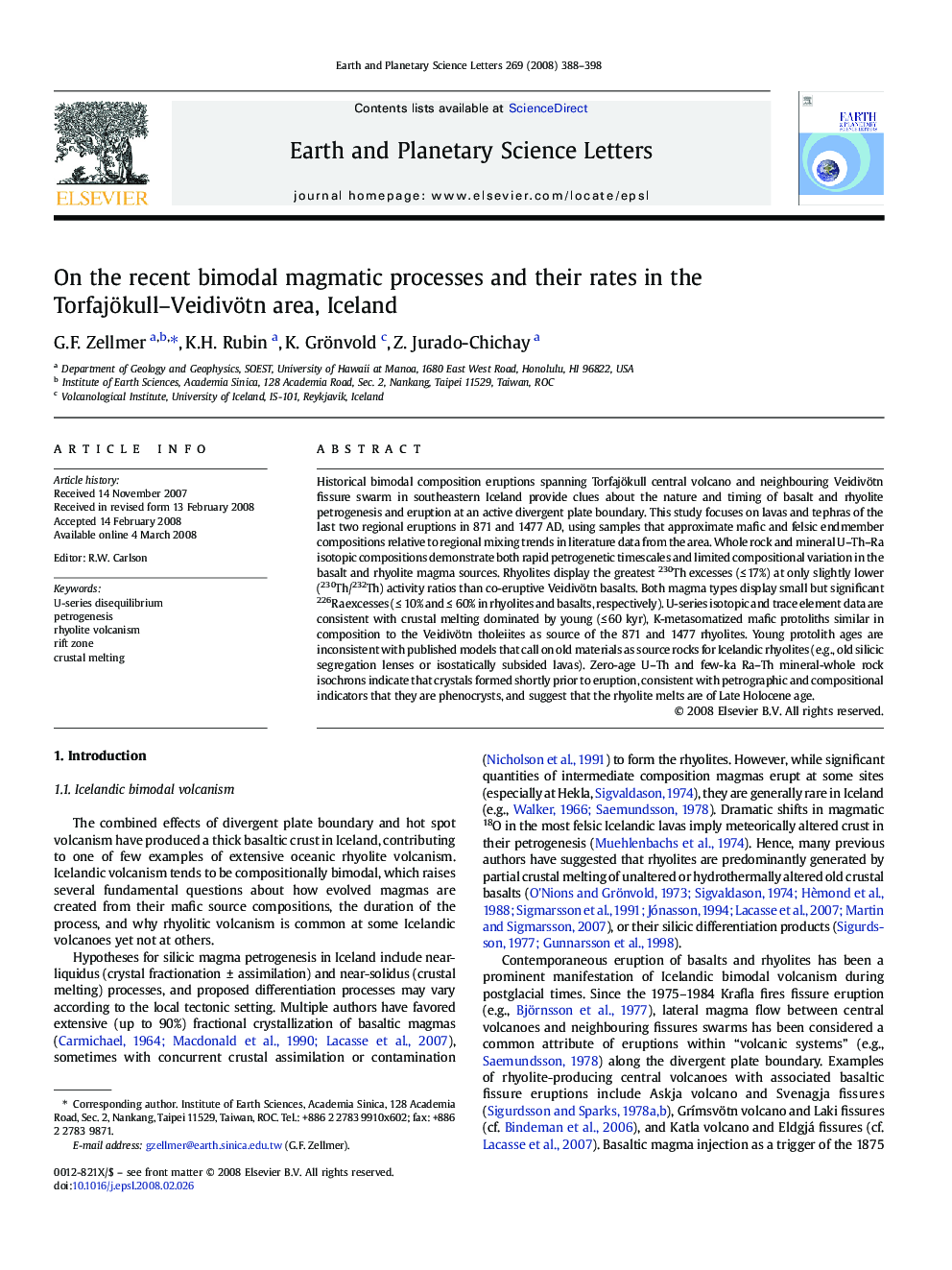| Article ID | Journal | Published Year | Pages | File Type |
|---|---|---|---|---|
| 4679777 | Earth and Planetary Science Letters | 2008 | 11 Pages |
Historical bimodal composition eruptions spanning Torfajökull central volcano and neighbouring Veidivötn fissure swarm in southeastern Iceland provide clues about the nature and timing of basalt and rhyolite petrogenesis and eruption at an active divergent plate boundary. This study focuses on lavas and tephras of the last two regional eruptions in 871 and 1477 AD, using samples that approximate mafic and felsic endmember compositions relative to regional mixing trends in literature data from the area. Whole rock and mineral U–Th–Ra isotopic compositions demonstrate both rapid petrogenetic timescales and limited compositional variation in the basalt and rhyolite magma sources. Rhyolites display the greatest 230Th excesses (≤ 17%) at only slightly lower (230Th/232Th) activity ratios than co-eruptive Veidivötn basalts. Both magma types display small but significant 226Ra excesses (≤ 10% and ≤ 60% in rhyolites and basalts, respectively). U-series isotopic and trace element data are consistent with crustal melting dominated by young (≤ 60 kyr), K-metasomatized mafic protoliths similar in composition to the Veidivötn tholeiites as source of the 871 and 1477 rhyolites. Young protolith ages are inconsistent with published models that call on old materials as source rocks for Icelandic rhyolites (e.g., old silicic segregation lenses or isostatically subsided lavas). Zero-age U–Th and few-ka Ra–Th mineral-whole rock isochrons indicate that crystals formed shortly prior to eruption, consistent with petrographic and compositional indicators that they are phenocrysts, and suggest that the rhyolite melts are of Late Holocene age.
